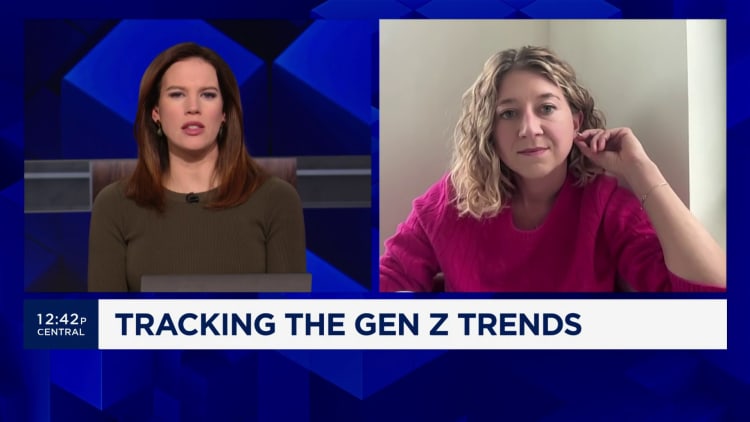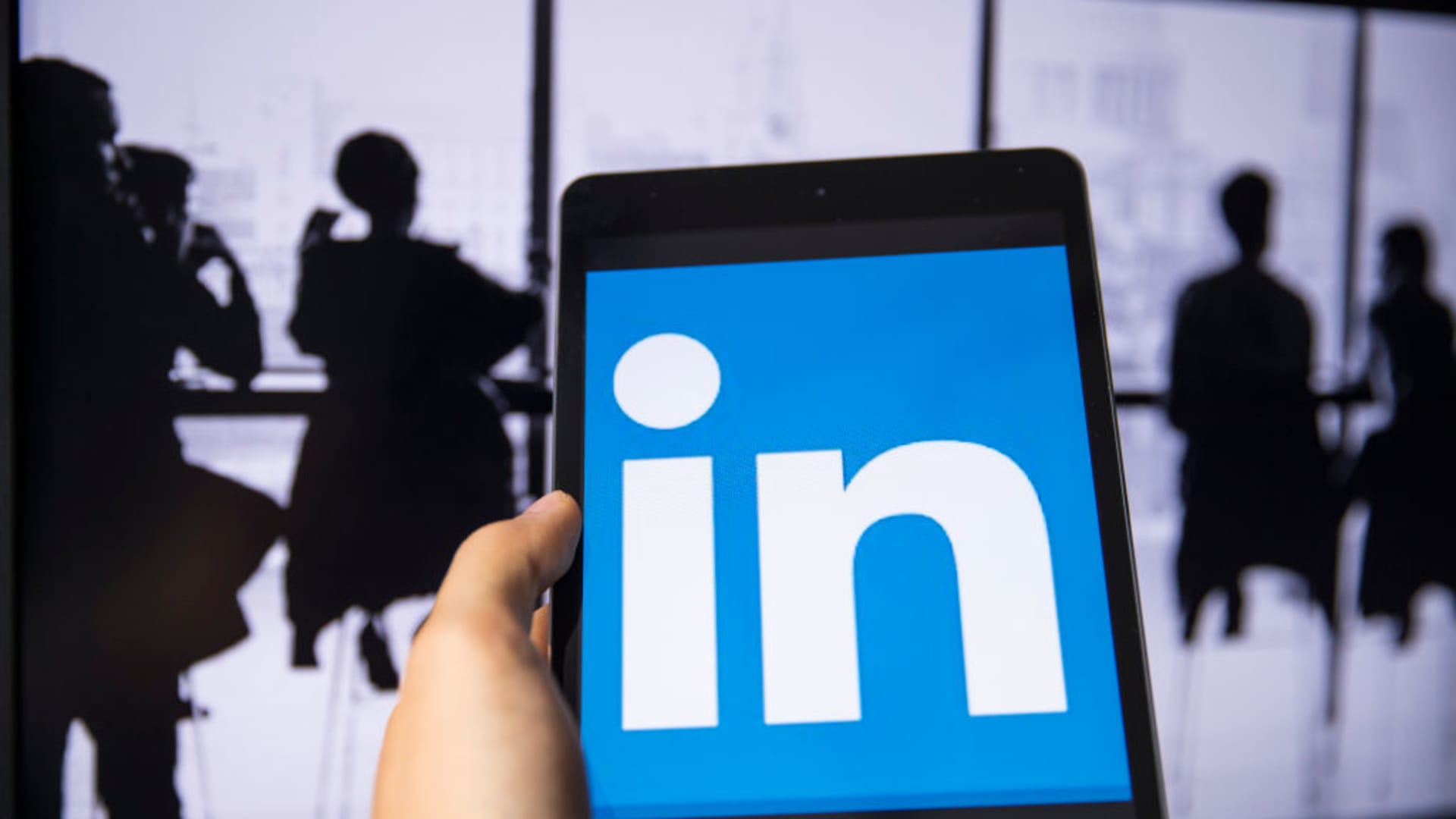According to the German intelligence agency bfV, Chinese spies used Linkedin to obtain information on German officials.
studio LINDJE | Getty Images
Some LinkedIn users have reported receiving unsolicited flirtatious messages through the platform, with expert Bernie Hogan at the Oxford Internet Institute saying the employment-focused social site is increasingly being used for dating purposes.
Blair Huddy, founder and CEO at Hudson Davis Communications, told CNBC that a LinkedIn user messaged her on two separate occasions asking if she could connect him with clients for her business, to which Huddy did not respond.
“Text me back whenever you’re done playing too hard to get,” the user said in a final message, which was seen by CNBC Make It via screenshots.
Huddy, a 35-year-old based in Los Angeles, said that when she receives such messages, she often takes pictures of them and posts them on LinkedIn, tagging the person who sent the messages. “It’s just a gross feeling … it’s gross, it’s unprofessional,” Huddy told CNBC. She has been an active LinkedIn user since 2012.
Shriya Boppana, a technology consultant, also reported receiving unpleasant messages on the platform. She attracted the attention of “a really weird group of followers” in 2020, she said, after updating her LinkedIn profile to reflect that she had recently won a beauty pageant and secured a hosting gig on a TV show.
An IT support worker she had previously worked with found her on the platform and told her she looked “nice,” according to messages reviewed by CNBC. Another man sent her a text, seen by CNBC, that said: “I always knew you were beautiful, but you never told me you were a pageant queen.” Both Huddy and Boppana are still active and posting on LinkedIn.
A LinkedIn spokesperson told CNBC Make It that the platform — which launched in 2003 and now has more than 1 billion members globally — defines itself as a “professional community,” adding that it encourages members to “engage in meaningful conversations and authentic”. LinkedIn is owned by Microsoft.
“This includes light and respectful conversation, as long as it doesn’t violate our community policies. Romantic advances and harassment of any form are a violation of our rules, and our policies include detailed examples of what kind of content doesn’t belong in LinkedIn,” the spokesperson said.
Hard data on this issue are scarce. According to a survey last year of 1,049 female LinkedIn users in the US, about 91% said they had received romantic advances or inappropriate messages at least once on the platform. Seventy-four percent of respondents felt the need to disconnect or limit their activity on the platform as a result, according to the survey published by photo studio Passport Photo Online.
Looking more broadly at user activity, another recent survey of 505 US consumers aged 20 to 40, published by DatingNews.com, found that 52% had met people for dating through networking platforms such as LinkedIn and Facebook. .

‘No job’
Bernie Hogan, an associate professor at the Oxford Internet Institute, told CNBC that LinkedIn is a social media platform, just like Instagram or Facebook. Although using LinkedIn is often “tailored as a work activity,” users are free to send any type of message to whomever they want without strict rules, Hogan said.
“LinkedIn is not a workplace, it just frames itself as a workplace,” he told CNBC Make It. “Offices and workplaces would normally regulate this sort of thing, but social media leaves it up to people to regulate.”
Hogan he said believes that LinkedIn does not adequately sanction users for inappropriate behavior, and this often leaves the victim to deal with it on their own, using strategies such as blocking or public shaming.
“LinkedIn needs to own some of the responsibility of maintaining a professional environment because they can’t offload that to people’s employers,” he noted. “Their employers don’t run LinkedIn.”
The LinkedIn spokesperson emphasized that the platform already has advanced security features to protect users from unwanted behavior. The feature “when activated, alerts members when harassment is detected within private messages,” the spokesperson said.
“We also encourage members to report any instances of harassment on LinkedIn and signal to us that such behavior is unwanted, allowing us to take action,” they said.
These actions can be the removal of the content that the offender has sent or even the suspension of their account.
But Hogan suggested that LinkedIn start incorporating AI tools to keep tabs on users who send inappropriate messages, rather than putting the onus on the person receiving the messages to report or block the perpetrator.
This means that users who try to write inappropriate messages will be detected by the AI and either warned or prevented from sending the message altogether.
“We already have online dating sites where people can’t send overly aggressive messages. Bumble and Tinder already have security protocols so people can’t send unsolicited photos or sexualized photos. They can block that. LinkedIn should too to have such technology available,” added Hogan.
Courtney Boyer, a relationship expert, told CNBC Make It that LinkedIn is becoming an alternative to traditional dating apps like Hinge, Tinder and Bumble, which have fallen out of favor.
A recent Forbes Health survey of 1,000 Americans who used dating apps in the past year found that 78% felt emotionally, mentally, or physically drained by dating apps sometimes, often, or always.
“People are tired of traditional dating apps because they don’t have those easily filtered things that people appreciate,” Boyer explained, saying users have to pay more to access certain filters on some dating sites.
On LinkedIn, however, you can easily filter people by industry, education and experience level for free, which are all features that can add to someone’s “sex appeal” when meeting, Boyer added.
Hogan at the Oxford Internet Institute agrees, saying the nature of the site is “close to dating” because it involves “the practice of putting yourself out there to meet people you haven’t known for a while.”
“So LinkedIn has effectively created a dating site without dating,” Hogan added.
Central Florida-based Sasha Dutta, founder and CEO of wedding planning company Fierce Events, said she’s received her fair share of flirty DMs on LinkedIn. However, she added that she would have considered some of the more respectful messages had she not been in a relationship at the time.
Thirty-four-year-old Dutta, who is from South Asia and is now married, says her community highly values the compatibility of career and education when two people come together romantically.
“I don’t see it as a bad thing … the proliferation of dating apps has been huge and every friend I have who is on a dating app says it’s like a part-time job and a lot of work just to ‘past. all of them,’ Dutta explained.
“I think with LinkedIn, you just take away a lot of the things that you would ask them on a first date, like what do they do or what’s their career trajectory, very basic surface-level questions, you get that right off the bat .”
LinkedIn’s professional community policies state: “LinkedIn is a professional networking platform, not a dating site. Do not use LinkedIn to pursue romantic relationships, seek romantic encounters, or make sexual comments about someone’s appearance or perceived attractiveness .”
Are behaviors changing online?
Woman looking for date through mobile app on smartphone. Concept of love and romance.
Oscar Wong | Moment | Getty Images
Huddy, who met her husband when they started working together, says millions of people have met their work partners in real life.
“Many of the activities we were doing at work in person are moving into online behavior,” she said.
She said it’s not necessarily a bad thing to approach someone on LinkedIn, “you just have to be careful how you do it,” Huddy said.
The most important factor is giving others the freedom to say no and leave a conversation if they’re not interested, added Hogan of the Oxford Internet Institute.
